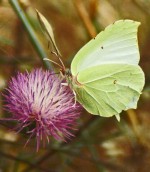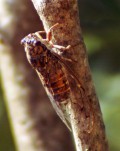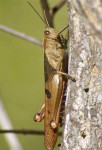I’m not in Spain currently, but my thoughts return there often, particularly on cold grey days. To me, Southern Spain is at its absolute best in the spring and I’ve been looking back through my photo archives to remind myself of where I may be wandering if I was there now.
One of my all-time favourite places, especially at this time of year is Tarifa, which has to be one of the most spectacular places in Europe. Miles of white-golden sandy beaches are a great attraction in themselves, but Tarifa is also known as the “wind-surf” capital of Europe due to the very high winds caused by the vortex effect created by the two land masses on either side of the Strait of Gibraltar. At weekends and during the summer months it is a hugely popular area and best avoided if you are visiting to seek out the wildlife. However, out of season, and particularly on week days it is much quieter and there is plenty of space to enjoy this beautiful and often wild and windswept place in peace.
The town of Tarifa is situated on the Atlantic shore, the Costa de la Luz, at the western end of the Strait of Gibraltar in the province of Cadiz. Being the most southerly point of Europe and a mere 16 kilometres from the African continent makes this an area of great importance during the migration periods when an estimated half a billion birds, including thousands of storks, vultures, eagles, kites and other raptors, along with seabirds cross and pass through the strait.
The following photographs were taken in early March a few years ago, when two of my friends and I drove down to spend the day there. Spoilt for choice as to which part of the area to make for , on this occasion we settled on Punta Paloma, located just a few kilometres to the west of Tarifa town.

Abandoned or wrecked small boats are often found on the beaches of this part of the coast, many used by would-be migrants from North Africa
Giant sand dunes, some of the largest and most important in Europe, form the western end of the beach. The dune ecosystem is unusual, fragile and is protected by the “habitats” directive of the network Natura 2000, but its conservation is very vulnerable. This is due in no small part to the area’s popularity with large numbers of visitors and holidaymakers.
The dune habitat supports a surprising number of plant species which have evolved a number of survival strategies to counter the effects of this hostile environment, many of which produce their flowers in the early spring.

One of the most beautiful plants growing on the sand dunes is Shrubby Pimpernel – Anagallis monelli. The white flower growing amongst this specimen is Sweet Alison – Lobularia maritima
A small river, el Rio de Valle reaches the sea here and its small estuary attracts a variety of wading birds, particularly during peak migration periods.
In the spring the area around the river’s edges are covered with coarse green grass with wildflowers growing through it.

























Hi lovely photos and memories Theresa – The trip today was cancelled due to severe Gales in the Barbate area, hope to see you back in Spain soon. Jill xx
LikeLike
Thanks Jill, we have had some amazing days out there haven’t we? I miss our outings very much, so watch this space for more reminders until I get back. Theresa x
LikeLike
A lot of nice photos. The turtle was a sad one, but hopefully it died of old age…
LikeLike
Teresa, I haven’t visited in months. I do read your blogs because I get them in my email. But, it’s not the same as coming to this special place of beauty and tranquility. Your photos are always beautiful. Your blog is a peaceful and I can relax and learning about the natural world from you. I let my blogging take over and now, I’m backing off and trying to find some balance. Are you in Spain now?
LikeLike